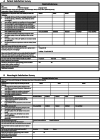Implementation of a Teleneurology Clinic in Zambia during the COVID-19 Pandemic
- PMID: 35150000
- PMCID: PMC9082463
- DOI: 10.1002/ana.26323
Implementation of a Teleneurology Clinic in Zambia during the COVID-19 Pandemic
Abstract
Objective: The objective of this study was to assess the feasibility, acceptability, and benefits of a teleneurology clinic serving adults usually attending a neurology outpatient clinic in Lusaka, Zambia during the coronavirus disease 2019 (COVID-19) pandemic.
Methods: Televisits were offered to patients scheduled for neurology appointments between March and July 2020 using the telephone, WhatsApp video, or Zoom calls based on patient accessibility. Visit outcomes were documented, and patient and neurologist satisfaction surveys were completed.
Results: Of 323 patients, 195 (60%) were reachable by telephone, 179 of these were alive, and 74% (133/179) of those alive agreed to a televisit. Stroke (30%), seizures (20%), and headache (16%) were the most common diagnoses seen via televisit. Most televisits (80%) were by telephone call, 14% by WhatsApp video call, and 6% by Zoom. Nearly one-third (30%) of the patients were stable and discharged from the clinic, 32% only required medication refills, and 19% required an in-person visit. Sixty patients (out of 85 reachable and 71% response rate) and 7 of 9 neurologists (78% response rate) completed satisfaction surveys. Neurologists reported greater assessment confidence with Zoom, but confidence was high for all modalities. Patients preferring televisits (75%, 45/60) noted reduced expense and time requirements, whereas those preferring in-person visits (22%, 13/60) cited the desire for physical examinations. Overall, 98% of patients and 100% of neurologists were satisfied with televisits.
Interpretation: Teleneurology visits were acceptable and feasible for adults attending an outpatient neurology clinic in Zambia and their neurologists. They offer a promising supplement to in-person visits in resource-limited settings, even when video-conference capabilities and electronic medical records are absent. ANN NEUROL 2022;91:445-454.
© 2022 The Authors. Annals of Neurology published by Wiley Periodicals LLC on behalf of American Neurological Association.
Conflict of interest statement
The authors declared no conflict of interest.
Figures



Comment in
-
Global Teleneurology.Ann Neurol. 2022 Apr;91(4):443-444. doi: 10.1002/ana.26334. Epub 2022 Mar 8. Ann Neurol. 2022. PMID: 35218048 No abstract available.
References
-
- Wechsler LR. Advantages and limitations of teleneurology. JAMA Neurol 2015;72:349–354. Available at: https://pubmed.ncbi.nlm.nih.gov/25580942/. - PubMed
-
- Dorsey ER, Glidden AM, Holloway MR, et al. Teleneurology and mobile technologies: the future of neurological care. Nat Rev Neurol 2018;14:285–297. - PubMed
-
- Hatcher‐Martin JM, Adams JL, Anderson ER, et al. Telemedicine in neurology: Telemedicine Work Group of the American Academy of Neurology update. Neurology 2020;94:30–38. - PubMed
Publication types
MeSH terms
LinkOut - more resources
Full Text Sources
Medical
Miscellaneous

